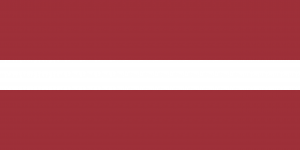Language/Standard-latvian/Culture/Latvian-art-and-architecture
| ◀️ Music, films and books — Previous Lesson | Next Lesson — Latvian museums and exhibitions ▶️ |
Latvia boasts a rich and diverse artistic heritage spanning several centuries, from the medieval period to modern times. Throughout its history, the country has been influenced by multiple cultures, including Germanic, Scandinavian, and Russian, which have left their mark on its architecture, sculpture, painting, and other forms of artistic expression. In this lesson, we will explore some of the most iconic buildings and landmarks in Latvia and learn about the country's artistic traditions, styles, and movements.
Consider broadening your understanding by checking out these related lessons: Latvian music and dance traditions & Nature and outdoor recreation.
Latvian Architecture and Artistic Movements
Latvian architecture has been influenced by many different styles, including the Gothic, Renaissance, Baroque, Classical, and Art Nouveau periods. The Old Town of Riga, the capital city of Latvia, is a UNESCO World Heritage Site renowned for its rich collection of medieval, Gothic, and Art Nouveau buildings. Among Latvia's most notable architects are Mikhail Eisenstein, who designed several historic buildings in Riga, and Konstantīns Pēkšēns, who contributed significantly to the development of the national Art Nouveau movement in the early 20th century.
Artistic movements have also played a crucial role in the development of Latvian art, which draws from both local folklore and international trends. The early 20th century saw the rise of expressionism, cubism, and futurism in Latvia, while the mid-20th century was marked by the emergence of abstractionism and surrealism. A significant figure in Latvian surrealism is Jāzeps Grosvalds, whose paintings often depict dreamlike, mystical landscapes and creatures. Contemporary Latvian art reflects a wide range of styles and themes, from pop art and street art to environmental and social issues.
Latvian Landmarks
Latvian landmarks are a testament to the country's rich cultural heritage and natural beauty. Riga includes several architectural gems, such as St. Peter's Church, with its stunning views of the city, the Gothic House of the Blackheads, and the Riga Castle, home to Latvia's president. The Riga Art Nouveau museum showcases the unique style of Latvian Art Nouveau, with its characteristic floral ornaments and geometric shapes. Latvian's countryside abounds with diverse landscapes, wildlife, and recreational opportunities. One of Latvia's most famous natural landmarks is the Gauja National Park, one of the largest national parks in Europe, which features numerous hiking trails, waterfalls, and caves.
Latvian Museum
Latvia is home to a variety of museums that showcase the country's rich history, culture, and art. The Latvian National Museum of Art, located in Riga, houses one of the most extensive collections of art in the Baltic states, including paintings, drawings, and sculptures from Latvian artists, as well as European and Russian art. The Latvian Ethnographic Open-Air Museum features a reconstructed Latvian village and displays traditional crafts, costumes, and architecture. The Museum of the Occupation of Latvia, located in Riga, documents the country's history under Soviet and Nazi rule.
Overall, Latvia's art and architectural history are rich and varied, with a host of fascinating landmarks, movements, and styles to explore. Whether you're interested in medieval fortresses, Art Nouveau buildings, or contemporary art, Latvia has something to offer.
Vocabulary
Here are some Latvian vocabulary words related to this lesson:
| Latvian | Pronunciation | English |
|---|---|---|
| māksla | ['maːksla] | art |
| sengriezeņu laikmets | [seŋ'ɡriːzeɲu lai̯kmets] | medieval period |
| arhitektūra | [arxitek'tuːra] | architecture |
| glezniecība | [ɡɫezn̪jɛtsiːba] | painting |
| skulptūra | [skulp'tuːra] | sculpture |
| Baroks | ['baro̞ks] | Baroque |
| Klasiskais | ['kɫa̠siːskais] | Classical |
| Modernisms | [mo̞'dɛrnis̪ms̪] | Modernism |
| Tūrisms | ['tuːr̪is̪ms̪] | Tourism |
Other Lessons
- Latvian nature and national parks
- Modern politics and society
- Latvian folklore and crafts
- Latvian language and literature
- Nature and outdoor recreation
- Latvian museums and exhibitions
- Popular sports and events
- Major historical events and figures
- Latvia Timeline
| ◀️ Music, films and books — Previous Lesson | Next Lesson — Latvian museums and exhibitions ▶️ |

